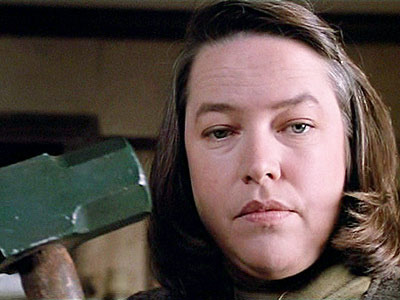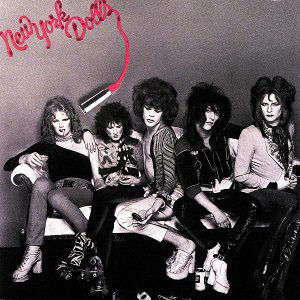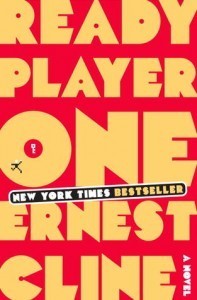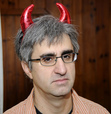Len Vlahos's Blog, page 8
February 7, 2013
This has been bothering me…
I commute everyday from Stamford, Connecticut to New York City. It’s a 50 minute train ride, and truth be told, I enjoy it. In the mornings I write, and in the evenings I work or sometimes read. The time on the train is not only productive, but it gives me time to ramp up for, or wind down from, the day.
Each morning my train arrives in Grand Central, typically on track 102, which is on the lower level of the station. We exit the track by the food court, and just a few feet from the officially sanctioned Grand Central Station street musician of the day. Sometimes it’s a person playing a piano and singing, sometimes a guitar, once even a harp.
Today, the busker in question was a violinist. And that’s what got me thinking.
Seeing this man scratch a bow across his strings reminded me of this Washington Post story from way back in 2007.
Click here to view the embedded video.
The main thrust of the article, which became something of an Internet meme when it was first published, was this:
The Post paysid one of the best violin players in the world, Joshus Bell, to stand in a busy Metro station during rush hour and play the classics of classical music on a 300 year-old Stradivarius. It’s a sociological experiment to see how people will react. Will they recognize beauty in their midst? Will they walk by Bell as they would any other street performer?
The answer is the latter. Almost no one stops to pay attention or give money. Bell plays for 45 minutes to an empty house, only it’s not empty. It’s full of people who just don’t seem to care.
When the story was first published, I was blown away. I saw it as a stunning example of humanity’s incapacity to appreciate art, and a devastating critique of how isolated and alienated we had each become.
Then as two strange things happened:
1. I had kids. Two of them, two years and five months apart, both boys, each a mini universe around which my love and devotion now orbits.
2. I started commuting. When the story was originally published, I was a car commuter — 35 minutes each way, usually listening to college radio, NPR, or sports talk.
The point is, my perspective has changed since 2007. Now I think the Post article kind of sucks.
Where I might have once sympathized with Bell and with the Washington Post brains behind the stunt — and yes, it was a stunt not an experiment — I now find myself looking at them with derision.
I was reminded of all this when I passed by the violinist in Grand Central this morning. I wondered for a second if he was, like Bell had been, an incognito virtuoso. Was I missing something? But here’s the thing. I didn’t care. I didn’t have time to care.
I leave my house as late as I possibly can each morning so I can spend the maximum amount of time with my boys. When my feet hit the ground at Grand Central, they’re practically running. Which, if you look around, seems to be true of pretty much everyone else. (There’s a reason for that expression, “It’s like Grand Central Station in here.”) I am not, as I step off my commuter train, in a frame of mind, nor do I care to be, to evaluate the proficiency of the street musician in question. It could have been Itzhak Perlman, and I wouldn’t have known, wouldn’t have cared.
The commute is a means to an end, but not an end itself. We are in transit because we have someplace to be. The reason no one appreciated Bell’s brilliance in DC is because no one listened. And honestly, that’s okay. Is it indicative of a sickness in our culture where work-life balance is out of whack? You betcha. But I’m not sure the Post article really helped.
And there’s something else that bothered me, too. Even if I had stopped, I wouldn’t have had the skill set to know that Bell was “all that.” Really, there are some damn good street musicians. Are any as gifted as Bell? Likely not. But I doubt that the average listener could tell the difference between the best street fiddler and the best concert violinist.
The whole thing was really an insult to buskers everywhere. “See, people ignore you, poor dumb busker, because they should. You’re no Joshua Bell.” Not nice!
And while I’m ranting, how many people still listen to Classical music anyway? I’m a musician so don’t get me wrong, I understand and appreciate that Bach was a genius, an uber genius. I’ve even bothered to teach myself one Bach piece on the piano, and I don’t even play the piano. But he’s dead. Has been for a long time as I understand it. Had Bach been playing today, he might be writing rap songs. But I digress.
The point is, how are we supposed to know if the music is especially good if there is no baseline in our knowledge against which to judge it? Most of us wouldn’t know beautifully rendered classical music from adequately rendered classical music.
So I found myself today thinking about that Post article, and now want to formally distance myself from my original opinion. If in 2007 I forwarded you the link with a “how cools is this? caption, I apologize.
Maybe I can atone by giving a buck to a real street musician rather than some classically trained savant who just happens to be slumming it.
And hey, you want me to stop and listen? Next time get Bruce to play Growing Up acoustic.
January 4, 2013
Opening Pandora’s Box

I’ll start this post with a riddle: What do these songs have in common?
The Long Black Veil — Johnny Cash
We’re Going to Be Friends — The White Stripes
How Soon Is Now – The Smiths
Here Comes the Sun — The Beatles
Speed of Sound — Coldplay
Boy’s Don’t Cry — The Cure
Tower of Babel — Elton John
Ocean – Lou Reed
China Doll — Grateful Dead
Let It Be — The Beatles (The good one with the guitar solo)
Give up? Keep reading.
Here’s your first clue: I love Pandora. I’m the only person in my social circle, possibly the only person in America, who has yet to sign up for Spotify. Why? I just told you. I love Pandora.
Whether I’m listening to the Lemonheads Station, or the Bruce Springsteen Station, or “Father Christmas” Radio, the application never fails to present me with similar songs that seem tailor-made to suit my tastes. This is true time and again with one notable exception. The exception is the common anchor tying those ten songs above together.
If you said Beatles Radio, or Cold Play Radio, or All Male, Mostly Guitar-based Songs that Len Generally Likes Radio, you’re wrong. The answer to the riddle is this:
That Old Wheel Radio.
“That Old What Radio? Really?”
Yes, That Old Wheel Radio. Really.
“That Old Wheel” is a country duet from Johnny Cash and Hank Williams, Jr. It’s got a classic country blues groove that isn’t so different from Cash’s own Folsom Prison Blues.
Click here to view the embedded video.
Listening to this, I would expect Pandora to pair me with Merle Haggard, or George Strait, or Waylon Jennings. The White Stripes? The Smiths?The Beatles? I don’t understand.
I thought maybe it was just my imagination, that maybe I kept catching the service and/or this specific station at the wrong moment. I had to know the truth. It was time to break out the scientific method.
The last day in the office before the Christmas break, I played That Old Wheel Radio for four hours straight. Not only did my co-worker tolerate 240 minutes of inexplicable musical pairings, she helped me keep the extended song list. Because yes, I noted every song played. (Special thanks to Nadine for covering for me when I was on the phone or, um, er indisposed.)
Nadine suggested that perhaps Pandora was presenting us with a list of artists covered by Johnny Cash, whose own musical tastes seemed to stretch very far and very wide. A truly horrific case in point:
Click here to view the embedded video.
After two hours I did try to trick the service into a more country state of mind. I hit the “NEXT SONG” button several times in a row, even though it forced me to bypass some songs I really liked. It worked! Pandora served up two country songs, including Someday You’ll Want Me to Want You, by Gene Pitney and George Jones. But it didn’t last. The next three songs were:
The L.D. Eye Theme — Crucifucks
High and Dry — RadioHead
Bizzare Love Triangle — New Order
Don’t get me wrong. I love the songs Pandora offered me. I’m just not sure how, using their stated methodology, they were able to tease a thread from Johnny Cash to The Crucifucks.
And yet, somehow, it works.
Those folks at Pandora are either really smart or really lucky. All I know is that I’ll keep listening.
What’s your favorite Pandora station?
December 20, 2012
The Hobbit: Not Appropriate for Any Age
Here’s what I liked about The Hobbit:
It was the first time I’d been to see a movie with my two East Coast nephews in years, and it was great to spend time with them.
The scene where Bilbo meets Gollum is pretty darn good.
Here’s what I didn’t like:
Everything else.
Okay, that might be an overstatement, but The Hobbit was a colossal disappointment.
First, Peter Jackson is like the Stephen King of directors. Almost every one of his recent films needs an editor. The Lord of the Rings movies were good but didn’t need to be quite that long (to be fair, the same was true of the books) and King Kong was ponderous. The Hobbit, however, presents a whole new level of cinematic self indulgence.

As almost every review has noted, there is simply no need to make three three-hour movies from one 300-page book. Jackson has a solution to this problem. He delves deeper into the history and lore of Middle Earth, relying on Tolkien’s histories from, I presume, the Silmarillion. I say “I presume,” because life is too short for me to read the Silmarllion. Or Finnegan’s Wake… Or… well, fill in the blank. Jackson presents this history and lore as endless, bloated, exposition. And there ain’t nothing word than exposition.
Jackson also has a fondness for panoramic crane and helicopter shots. You know these shots. The camera sweeps across the scene in a direction that stands in opposition to the main action. It creates movement and emotion and is appealing the first 17 times you see it. The next 17 times it gets a bit tired. The next 17, stale. And the following 6,000, annoying. Jackson doesn’t have a fondness for these shots, he takes them out to dinner, wines them, dines them, and takes them back to his flat for a roll in the hay. Enough already.
Most surprising, the special FX in The Hobbit leave a lot to be desired. Other than the aforementioned scene with Gollum, the CGI and green screen effects are too easy to spot. (Especially in the sweeping panoramic shots.) That was truly disappointing, as you expect more from this production team. This more than anything else suggests that they sort of phoned it in.
Finally, The Hobbit is just silly. “Really, Len? Silly? A movie about trolls and goblins and hobbits, silly?” Okay, yeah, it would be hard for this movie NOT to be silly. But the LOTR films didn’t fall into that trap. (Though the source material for The Hobbit does skew younger.) The problem is, while that silliness will play well to a younger audience, the movie is really too violent and scary for any kid under 8 years old. And I guess with that in mind, I should amend the title of this post to:
The Hobbit, Not Appropriate for Anyone Other than 8 – 13 Year-Old Boys.
If that’s not you, wait for the DVD.
Of course, you can be sure I’ll go see both sequels. (Yeah, don’t say it. I know.)
December 3, 2012
Greatest Screen Villain
I love lists. You could probably tell that by the High Fidelity quote on the welcome page. But my love of lists doesn’t come from Nick Hornby or John Cusack, it springs from my insomnia.
It turns out that memorizing boring lists of things will help clear your mind of clutter and allow you to sleep. Really, it’s true. If you see me on the street some day, ask me to start rattling off world capitals. I won’t get all of them, but 120 or so is enough to put anyone, including yours truly, to sleep.
So it’s no surprise then that I love top 10, best of, and other lists. With that in mind then, here then are my top three, all-time screen villains. I would love to know yours. (By the way, SPOILER ALERT.)
1. Grand Moff Tarkin (Star Wars)
Everyone thinks the greatest villain is Darth Vader. Nuh uh. Darth Vader isn’t a villain; he’s a protagonist. The story arc of the six (at the time of this writing) films of the Star Wars canon is that of Anakin Skywalker, better known as Darth Vader. He starts out as an impetuous boy of immense talent and promise, is led astray by jealousy and ambition, and is redeemed in the end by the love of his son. Sure, he’s one bad mama jama and will scare the pants off any six year old, but he doesn’t hold a candle to Gran Moff Tarkin.
This dude (portrayed brilliantly by Peter Cushing) ruthlessly and callously blows up and entire unarmed planet, just because he can. He was the Stalin of a galaxy far, far away, and a long, long time ago. Plus, really, when you think about it, Darth Vader was his bitch.
2. The Shark (Jaws)
I had just turned 10 years old when Jaws was released in June of 1975 and I begged my parents to let me go see the film.
“You’re too young,” I was told, and that was that.
But 1975 was a different time. There was no real after market for theatrically released films. If there was an audience willing to pay, the films stayed in theaters. (They would actually leave for a bit and be re-released.) Jaws was back on the big screen in the 1976, and a year was all the difference I needed. I wore my parents down and went to see the movie.
Let me cut right the chase: my parents were right. For one week I had a recurring nightmare that I slept walked out of our house, made it all the way to the ocean (which, in reality was 40 or 50 miles away), wandered into the surf, and was eaten by a shark. It was terrifying.
The shark in Jaws is a soulless eating machine. But it isn’t mindless. The shark shows just enough intelligence to act with true malice. At the end of the film, when the shark eats the boat, it is believable and it will make you dig your nails in the arm of your chair. If you have any opportunity to see this on a big screen, don’t pass it up. It’s great in any environment, but it’s really special writ large.
3. Annie Wilkes (Misery)
I’m not a Cathy Bates fan. I find her to be wooden and a bit predictable. Primary Colors, Titanic, I never quite believe the characters she’s playing. There is one notable exception: Misery.
Bates’ portrayal of Annie Wilkes is chilling. Her rapid fire change from the prudish, innocent Florence Nightingale to the foul-mouthed Nurse Ratched (another great screen villain) is jarring. It’s almost enough to make me stop writing.
Okay, so did I get the top three right? What about Hannibal Lechter? Or Norman Bates? Or Chick Hicks? There are dozens of other possibilities. What do you think? Let me know…
November 24, 2012
Copyright? Copywrong.
There are a few important things you should know about me before reading the post below:
1. I work in the book industry and have for many, many years. As an industry, we are very interested in protecting the rights authors have in the intellectual property they create.
2. As evidenced by this website, I’m a soon-to-be published author. Egmont USA paid me an advance and is going to pay me a royalty on every copy of my book you (whoever you are) buy. Each sale brings me one step closer to every author’s dream — freedom from the day job. (ANd I have a great day job but I still want that freedom.)
3. I think people who create content for a living — words, music, images, moving images — deserve to be compensated for their work. I really, really do.
It’s against this backdrop that I tell you that I’ve come to the conclusion that copyright sucks. Well, sort of.
In my book, The Scar Boys, I use a snippet of a song lyric to head each of the 40 chapters. And when I say snippet, I mean snippet. Two examples:
“Thunderbolts and lightning, very, very frightening…”
—Queen
“Gives me the shots, gives me the pills, got me takin’ this junk, against my will…”
—New York Dolls
In fact, the New York Dolls quote above is the longest of the 40 snippets I use. I figured such a small sample of text would be protected by the Fair Use doctrine of the copyright law. (In case you’re not familiar with Fair Use, see this article.) Nuh uh.
My own research, along with the lawyers employed by my publisher, suggests that using even a few words of a song lyric or a poem could constitute infringement, and that “music publishers are fierce and protective and tend…to charge a lot of money.”
So I am, right now, in the process of trying to clear permissions for each of these 40 snippets. This is turning out to be a Herculean effort. You have to track down not just the artist, not just the writer, not just the music label, but the publisher. Once you do, you’re likely to find out that the publisher employs a secondary publisher to handle reprint licensing. When you finally get to the right entity, when you finally gather all the information they need to process your request, you wait. And then you wait some more.
Okay, sure, my complaint so far is more about the process than protection of the copyrighted material. But that’s not my only concern. Here’s my beef:
Isn’t it better for the writers of “Pills” (the New York Dolls song), to have public references to the song that in no way infringe on the potential sale of the music? I mean think about it. How many people today even remember this song? Suppose my book sells through its 10,000 unit print run (a pipe dream, I know, but you have to start somewhere). That’s 10,000 people (not counting pass through) that get exposed to the existence of a song that almost none of them know exists. And they want me to pay them? Shouldn’t this be the other way around? Shouldn’t I be able to collect some sort of marketing placement fee?
Okay, I don’t really mean that, but you get the point. The bottom line is that I’m likely to give up my pursuit of permission and find some other, public domain method of teasing each chapter of the book. That’s a lost opportunity for each of the writers/artists I was trying to quote.
I really would like to know what you think…
David Mitchell is a Genius

To call David Mitchell a genius sounds almost hackneyed. For people who read contemporary fiction, Mitchell is so widely respected that it seems, at times, incredulous. It’s not.
Having already been enamored of Mitchell after reading Cloud Atlas and Black Swan Green, my expectations for The Thousand Autumns of Jacob De Zoet were high. Very high. I’m here to tell you now that those expectations were blown out of the water.
Thousand Autumns is a masterpiece.
At times it reads like a captivating memoir of the Dutch East India Company. At other times it reads like a fantasy/horror novel set in Feudal Japan. And at other times it reads like novel of the sea, like Moby Dick, or perhaps Patrick O’Brian (though I confess to having never finished the former and having never read the latter.) But at all times it is gripping — once you’re about 100 pages in, you cannot put this book down –and it is seamless.
I mean this last comment literally. You cannot find the seams. The way in which the various stories are woven together (De Zoet’s love of the disfigured Miss Aibagawa, the horror of the Shiranu Temple, the fate of the Dutch sailors on Dejima); the ease with which the words flow on the page; the absolute and total believability of the historic environs in which the novel is set (this book is an homage to the art of research) is blended into a beautiful whole that is more than the sum of its parts. And the sum of its parts is quite a lot.
There are also important themes and messages in this book about the unfortunate role of race during the Colonial heyday of Europe; about the nature of belief and how it can serve to both bolster and destroy the human spirit; and about the noble ideal of the truth.
As strong as this review is, I’m not sure I can recommend this book to everyone. Much like Jonathan Lethem’s Chronic City, another brilliant work by a master crafstman, this book might be less accessible than something like Black Swan Green. But once you’re in, I promise, you’ll be hooked.
One final word on David Mitchell: The most astonishing thing about Cloud Atlas, Black Swan Green, and Thousand Autums, is that all three appear to be written by different authors. The style and substance of each novel are unique. If you were to place these three works before a literary critic from another era, I’m hard pressed to believe he or she would ever deduce that they were written by the same hand. And to me, that is the mark or an incredibly skilled writer.
October 21, 2012
Ready Player One
When I was in high school, the world of kid entertainment was in a state of transition. This was nowhere more evident than in the arcade at the Nathan’s restaurant on Central Avenue in Yonkers, New York, my home town.
In 1981, the year I entered the 11th grade, the pinball machines in the Nathan’s arcade were being replaced by video games. The way I remember it, each week we’d see three fewer pinball decks, and three new electronic game consoles. It was an early version of the digital revolution we’ve already seen in music, and are now seeing in books and film. The Bally company was, I suppose, the Newsweek of its industry and its day.
Those first games bear little resemblance to the games of today. The displays were typically two dimensional vector graphics; only one person played at time; and any narrative thread was largely nonexistent. You moved from point A to point B and you shot stuff with glowing pixels of light that traversed the screen like a Times Square news scroll. But they were awesome.
Remember, before those video games were released, kids were relegated to using rubber paddles to smack little chrome balls around a tilted, static board with bells and bouncy things. Asteroids, Space Invaders, and Tempest were a revelation. And they were completely addictive.
I tell you all this so you’ll understand exactly why I loved Ready Player One as much as I did.
 Thank you Matt Norcross of McLean & Eakin for recommending this book. It’s a ridiculously fun, page-turning romp through a virtual reality world known as the OASIS, set some 30 years in the future. The OASIS’s founder, James Halliday, is not unlike Willy Wonka in that he challenges users to find three secret keys hidden in the VR world, and promises, albeit posthumously, a controlling interest in his company to the first to successfully do so. The hunt is on.
Thank you Matt Norcross of McLean & Eakin for recommending this book. It’s a ridiculously fun, page-turning romp through a virtual reality world known as the OASIS, set some 30 years in the future. The OASIS’s founder, James Halliday, is not unlike Willy Wonka in that he challenges users to find three secret keys hidden in the VR world, and promises, albeit posthumously, a controlling interest in his company to the first to successfully do so. The hunt is on.
The catch is that all the clues stem for Halliday’s favorite decade, the 1980s. There are a few points where it takes one step too close to being really silly, but even those moments are charming. And the entire book moves faster than a Japanese bullet train.
If you came of age in the 1980s, if you like(d) (then or now) video games of any stripe, or if you like puzzles, this book is for you. If you didn’t come of age in the 1908s, if you never played a video game, if you’re not much for puzzles, but you like a fast-paced well written story, then this book is still for you.
I loved it and can’t wait for the movie.
October 4, 2012
BLue Latitudes
One of my favorite genres is what I’ll call travel adventure, or maybe history adventure. Books like Into Thin Air or In the Heart of the Sea have captivated me from cover to cover. Undoubtedly, my favorite writer in this genre is Tony Horwitz. And my favorite of his books is Blue Latitudes.
It’s the story of Captain James Cook and his impact on the 18th Century world. Horwitz retraces Cook’s steps to see if more than two hundred years of Western influence has thoroughly and corrupted and changed places like Fiji, New Zealand, and Hawaii. It’s a perfect blend of erudition and humor. And for me, it was serendipity that the book and I found one another.
Before I ever heard of Blue Latitudes, I had already happened on two different statues of Captain Cook — one in Hawaii (where he was killed by angry Hawaiians) and one in Alaska, where he overlooks the inlet that bears his name. I’m now kind of obsessed with finding other Cook landmarks. I’ve been to the one in London, but now really want to get to others in the Pacific.
See what books can make a person do?

Cook Statue, Cook Inlet, Anchorage

Captain Cook Monument, Hawaii

Cook Statue Trafalgar Square, London
September 27, 2012
First Record
Here I am the day I bought my first electric guitar. Truth be told, this was actually my second guitar. The first was a Hondo acoustic, the $50 Sam Ash house brand, that I got as a present for my 13th birthday. It was like a shot some incredibly addictive drug. I was hooked. It was enough to get me to go out and get a job delivering Pennysavers, the money from which I used to buy this Strat. And yes, I am actually wearing a Boy Scout uniform, and no, I wasn’t wearing it to be ironic.
This was around the time I was graduating from my siblings’ records and started buying my own. My first two purchases were Don Ho’s “Tiny Bubbles” and Barry Manilow’s “Mandy.” KIDDING, of course. The first thing I ever bought for myself was a 45 RPM single of “Train in Vain” by The Clash.
Click here to view the embedded video.
The Clash changed me. Well, not just The Clash, but the entire New Wave that was cresting on American shores. As much as I loved the Beatles and the music of the early British Invasion, it was never really my music. It was a hand-me-down, like an older brother’s shirt. And as much as I appreciated the ethos of the 1960s rebellion, it wasn’t my rebellion either. Truth is, I, and my friends of the time, were really tired of hearing about the 60s. Seriously, there seemed to be a never ending stream of BMW-driving Yuppies who needed to convince themselves (and the rest of the world) that what they did as kids mattered. That their rock-infused youth gave some purpose to the soulless, materialistic adult lives. Well, to those of us entering high school in 1979 — the year Train in Vain came out — the world still seemed liked a pretty fucked up place, so maybe it was time those Yuppies moved to Florida like their parents had. (And guess what, most of them eventually did.)
Click here to view the embedded video.
These two videos typify the New wave to me. The first one is from The Violent Femmes. Yeah, yeah, I know. “Blister in the Sun” has been used in every hackneyed movie made in the last 30 years, and is now a staple of every wedding DJ’s set list. But that wasn’t true when they debuted in 1983. Their sound was unique, and it was cool. And this song, “Add It Up,” is just killer. The second video, “Back of My Hand” by the Jags actually came out in 1979, but didn’t make it’s way to my turntable until a few years later. It’s a catchy pop tune with just a hint of edge, and an oh so cheesy vibe.
September 24, 2012
Thank you!
Thanks for joining the mailing list. I’ll let you know what’s new with The Scar Boys and with the book tour, but I promise not to abuse the privilege.
Len



